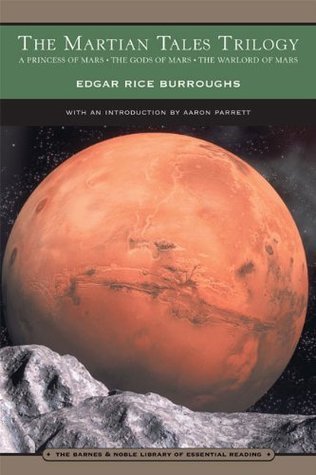What do you think?
Rate this book


About the Author:
Born in Chicago, Illinois, on September 1, 1875, Edgar Rice Burroughs grew to maturity during the height of the Industrial Revolution and witnessed the emergence of the United States as a twentieth-century world power. Hailing from a well-to-do family, Burroughs was given an aristocratic education steeped in Latin and Greek, but he was drawn more to an itinerant life of adventure than to a life in the boardroom. The author of Tarzan of the Apes (1912), Burroughs did not confine himself to a single genre; he also wrote medieval romances (The Outlaw of Torn, 1914), westerns (The War Chief of the Apaches, 1927), and mainstream novels (The Girl from Hollywood, 1922).
617 pages, Paperback
First published January 1, 1991

“And the sight which met my eyes was that of a slender, girlish figure, similar in every detail to the earthly women of my past life. She did not see me at first, but just as she was disappearing through the portal of the building which was to be her prison she turned, and her eyes met mine. Her face was oval and beautiful in the extreme, her every feature was finely chiseled and exquisite, her eyes large and lustrous and her head surmounted by a mass of coal black, waving hair, caught loosely into a strange yet becoming coiffure. Her skin was of a light reddish copper color, against which the crimson glow of her cheeks and the ruby of her beautifully molded lips shone with a strangely enhancing effect.”
“The remainder of our journey to Thark was uneventful. We were twenty days upon the road, crossing two sea bottoms and passing through or around a number of ruined cities, mostly smaller than Korad. Twice we crossed the famous Martian waterways, or canals, so-called by our earthly astronomers. When we approached these points a warrior would be sent far ahead with a powerful field glass, and if no great body of red Martian troops was in sight we would advance as close as possible without chance of being seen and then camp until dark, when we would slowly approach the cultivated tract, and, locating one of the numerous, broad highways which cross these areas at regular intervals, creep silently and stealthily across to the arid lands upon the other side. It required five hours to make one of these crossings without a single halt, and the other consumed the entire night, so that we were just leaving the confines of the high-walled fields when the sun broke out upon us.”